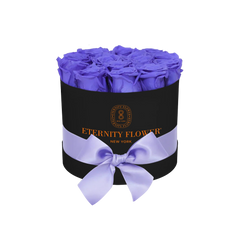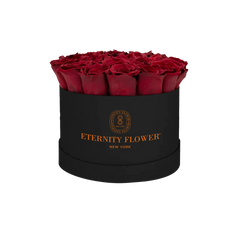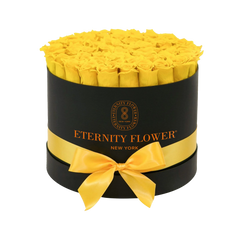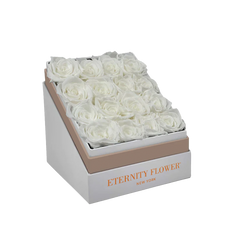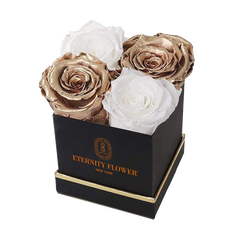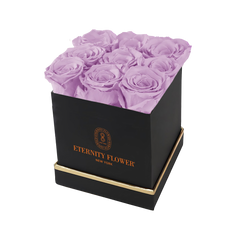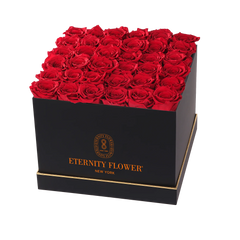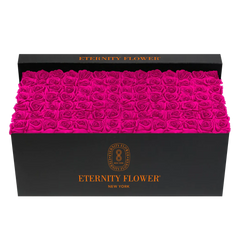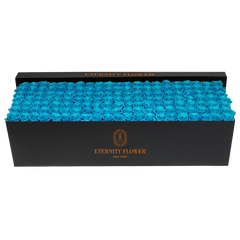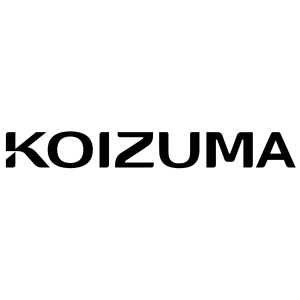If you want to learn more about flowers, this article is the guide for you. It has a lot of different flowers that start with H. There's something here for everyone, whether you come for the beauty, the bees, or just the love of farming. It's time to get our yard boots on, get our hands dirty, and discover the wonderful world of 'H' flowers together!
1. Hibiscus

- Flower Type: Perennial and annual varieties.
- Growing Zones: Typically zones 5 through 9 for perennial types; annual types can be grown in all zones.
- Origin: Native to warm-temperate, subtropical, and tropical regions throughout the world.
- Color: Wide range including white, pink, red, orange, peach, yellow, and multicolored varieties.
Hibiscus flowers are renowned for their large, vibrant blooms that can make a dramatic statement in any garden. These plants come in both perennial and annual varieties, with the former being hardy in USDA zones 5 through 9.
Originating from various warm regions around the globe, hibiscus plants can offer a diversity of colors, from bold reds to soft pinks, and even striking multicolor patterns. They thrive in full sun and require well-drained soil, making them a popular choice for gardeners looking to add a tropical flair to their landscape.
2. Hydrangea

- Flower Type: Perennial shrub.
- Growing Zones: Zones 3 through 9, depending on the variety.
- Origin: Native to Asia and the Americas.
- Color: Flowers can be blue, pink, white, lavender, and sometimes green, depending on the soil pH.
Hydrangeas are beloved for their large, lush flower heads that bloom in a variety of colors based on the soil's acidity. These perennial shrubs are versatile, growing in USDA zones 3 through 9 with a preference for morning sun and afternoon shade.
Originating from both Asia and the Americas, hydrangeas can adapt to several climates and conditions. The color of their blooms can change from blue to pink or vice versa by adjusting the soil pH, adding a unique and interactive element to gardening with these plants.
3. Heather

- Flower Type: Evergreen shrub.
- Growing Zones: Zones 4 through 6.
- Origin: Native to the moorlands of Europe and Asia Minor.
- Color: Pink, white, and purple.
Heather is an evergreen shrub that brings year-round color and texture to gardens, especially thriving in the cooler climates of USDA zones 4 through 6. Originating from the moorlands of Europe and Asia Minor, heather plants are well-suited to rocky or sandy soils, requiring good drainage and acidic conditions.
They produce small but numerous bell-shaped flowers in shades of pink, white, and purple, creating a dense and colorful ground cover. Beyond their beauty, heather plants are also appreciated for their ability to attract pollinators while requiring minimal maintenance.
Read More: 30+ Flowers That Start With D And How To Plant Them
4. Heliotrope

- Flower Type: Perennial, often grown as an annual in cooler climates.
- Growing Zones: Zones 10 and 11 as a perennial; can be grown as an annual in other zones.
- Origin: Native to Peru.
- Color: Primarily shades of purple, also available in white and pink.
Explanation: Heliotrope, with its sweet vanilla fragrance and clusters of tiny, star-shaped flowers, is a favorite among gardeners for adding both scent and color to gardens. Originating from Peru, it thrives as a perennial in the warm climates of USDA zones 10 and 11 but can also be enjoyed as an annual in cooler regions.
The flowers, ranging from deep purples to pinks and whites, are known to attract pollinators such as butterflies. Heliotropes prefer full sun to partial shade and well-drained soil, making them a versatile choice for beds, borders, and containers.
5. Hellebore

- Flower Type: Perennial.
- Growing Zones: Zones 4 through 9.
- Origin: Native to Europe and Asia.
- Color: Includes white, green, pink, purple, and black.
Explanation: Hellebores, also known as the Christmas or Lenten rose, are celebrated for their early blooming period, often flowering in late winter or early spring when most other plants are dormant. They are hardy perennials that can thrive in USDA zones 4 through 9, making them a valuable addition to shade gardens.
Native to Europe and Asia, hellebores have leathery leaves and produce cup-shaped flowers in a variety of colors, including white, green, pink, purple, and even near-black. These plants prefer well-drained, fertile soil and partial to full shade, where they can provide a much-needed splash of color in the colder months.
6. Hollyhock

- Flower Type: Biennial or short-lived perennial.
- Growing Zones: Zones 3 through 8.
- Origin: Native to Asia and Europe.
- Color: Wide range including pink, red, white, yellow, and purple.
Explanation: Hollyhocks stand tall in the garden with their impressive spikes of large, colorful flowers, ranging from deep reds and pinks to pure whites and yellows. Originating from Asia and Europe, they are most commonly grown as biennials but can also behave as short-lived perennials in USDA zones 3 through 8. Hollyhocks are known for their architectural height, often reaching up to 6 feet or more, making them an excellent backdrop for garden beds and borders.
They prefer full sun and well-drained soil. While hollyhocks are relatively easy to grow, they may require staking to support their tall stalks and are susceptible to rust, which gardeners should watch out for.
7. Hosta

- Flower Type: Perennial.
- Growing Zones: Zones 3 through 9.
- Origin: Native to Northeast Asia.
- Color: Foliage varies in color; flowers are typically lavender or white.
Hostas are cherished primarily for their lush foliage, which comes in a range of colors, textures, and sizes, from deep greens to variegated patterns of white, yellow, and green. Originating from Northeast Asia, these shade-tolerant perennials thrive in USDA zones 3 through 9.
While hostas are known for their leaves, they also produce spikes of lavender or white bell-shaped flowers in the summer, which can add an unexpected charm to shaded garden areas. They prefer moist, well-drained soil and can vary widely in size, making them extremely versatile for ground cover, border planting, or as feature plants in shade gardens.
8. Hyacinth

- Flower Type: Perennial bulb.
- Growing Zones: Zones 4 through 8.
- Origin: Native to the eastern Mediterranean, Turkey, and the Middle East.
- Color: Wide range of colors including blue, purple, pink, red, white, and yellow.
Hyacinths are highly fragrant, spring-blooming bulbs known for their dense spikes of brightly colored flowers. Native to the eastern Mediterranean, Turkey, and the Middle East, they are hardy in USDA zones 4 through 8. Hyacinths can add a burst of color and fragrance to gardens in early spring, making them popular for beds, borders, and containers.
The flowers come in a variety of shades, including rich blues, purples, pinks, and even soft yellows. For the best results, plant hyacinth bulbs in the fall in well-drained soil and full sun to partial shade. They are also commonly forced in pots for indoor enjoyment during the winter months.
9. Heuchera

- Flower Type: Perennial.
- Growing Zones: Zones 4 through 9.
- Origin: Native to North America.
- Color: Foliage in shades of green, silver, purple, and red; flowers are small, bell-shaped in white or pink.
Heucheras, also known as Coral Bells, are primarily grown for their striking foliage, which comes in a wide array of colors from deep purples and reds to silvers and greens. Native to North America, these perennials thrive in USDA zones 4 through 9, making them a versatile choice for many gardens. In addition to their colorful leaves, heucheras produce delicate spikes of small, bell-shaped flowers in the spring or early summer, which can attract hummingbirds and other pollinators.
They prefer partial shade and well-drained soils, making them perfect for woodland gardens, borders, or as ground cover. The diversity in leaf color and texture also makes heuchera a popular choice for adding visual interest and contrast to garden designs.
10. Honeysuckle

- Flower Type: Perennial shrub or vine.
- Growing Zones: Zones 4 through 9.
- Origin: Native to the Northern Hemisphere, especially in temperate regions of Europe, Asia, and the Americas.
- Color: Flowers range from white to yellow, pink, and sometimes red.
Honeysuckles are cherished for their sweetly scented, tubular flowers, which bloom profusely and can attract a plethora of wildlife, including birds, bees, and butterflies. This diverse group includes both bush and vine types, making them versatile for a variety of garden settings. They thrive across USDA zones 4 through 9, depending on the species.
Honeysuckles are particularly noted for their vigorous growth and the ability to cover fences or walls when grown as vines, or to form dense shrubs that can be used for borders or hedges. The intoxicating fragrance and rich nectar of their flowers make honeysuckles a delightful addition to any garden, especially near living areas where their scent can be enjoyed.
11. Helenium

- Flower Type: Perennial.
- Growing Zones: Zones 3 through 8.
- Origin: Native to North America and Central America.
- Color: Mostly shades of yellow, orange, and red.
Heleniums, also known as sneezeweed, are vibrant late-summer to fall bloomers, celebrated for their daisy-like flowers that come in warm shades of yellow, orange, and red. These perennials are native to North and Central America and are hardy in USDA zones 3 through 8. Heleniums can add a burst of color to the garden when many other flowers are beginning to fade, making them valuable for extending the blooming season.
They prefer full sun and well-drained soil, and they're particularly suited to wildflower gardens and borders. Beyond their aesthetic appeal, heleniums are also known for attracting pollinators like bees and butterflies, making them a beneficial choice for ecological gardens.
12. Hypericum

- Flower Type: Perennial, shrub.
- Growing Zones: Zones 5 through 9.
- Origin: Widely distributed worldwide, with species native to many temperate regions.
- Color: Bright yellow flowers, sometimes with orange or reddish markings.
Hypericum, commonly known as St. John's Wort, encompasses a wide range of species that include both ground-covering perennials and shrubs. They are renowned for their bright yellow flowers, which can bring a cheerful splash of color to the garden in summer and early fall. Hypericums are hardy in USDA zones 5 through 9, depending on the species. These plants are versatile and can thrive in a variety of garden settings, from borders to rock gardens.
They prefer well-drained soil and full to partial sun. Beyond their ornamental value, some species of hypericum are also valued in herbal medicine for their potential health benefits, although gardeners should be cautious as some species can be invasive or toxic to livestock.
13. Helichrysum

- Flower Type: Perennial or annual, depending on the species.
- Growing Zones: Zones 9 through 11 for perennials; can be grown as an annual in cooler zones.
- Origin: Native to Africa, Madagascar, Australasia, and Eurasia.
- Color: Flowers in shades of yellow, orange, red, pink, and white.
Explanation: Helichrysum is a diverse genus that includes both annuals and perennials, known for their vibrant, papery flowers which can retain their color long after being picked, earning them the common name "everlasting" or "strawflower." They are hardy in USDA zones 9 through 11 when grown as perennials but can be planted as annuals in cooler climates.
Originating from various regions including Africa, Madagascar, and Eurasia, these plants are valued for their unique blooms that come in a wide range of colors. Helichrysum prefers full sun and well-drained soil, making them ideal for sunny borders, rock gardens, and as dried flowers in arrangements due to their long-lasting nature.
Read More: 30+ Enchanting Flowers That Start with E
14. Hemlock

- Flower Type: Biennial or perennial herb.
- Growing Zones: Hemlock species can vary widely in their growing zones.
- Origin: Native to temperate regions of the Northern Hemisphere.
- Color: Small, white flowers arranged in umbrella-like clusters.
Explanation: Hemlock refers to several different plants within the Apiaceae family, including the poisonous types like Conium maculatum (poison hemlock) and the non-toxic Tsuga species (hemlock trees). Poison hemlock is known for its small, white flowers and distinctive spotted stem, and is native to Europe and North Africa but has been widely introduced elsewhere.
It is famously toxic and can be fatal if ingested. Hemlock plants (Conium maculatum) thrive in a variety of environments and are often found in damp, nutrient-rich soils. Despite its danger, the plant plays a role in natural ecosystems and has a place in the history of medicine and philosophy.
15. Henbane

- Flower Type: Annual or biennial herb.
- Growing Zones: Can be grown as an annual in most zones.
- Origin: Native to Eurasia and North Africa.
- Color: Yellow with a purple center or entirely purple, often veined or netted with darker colors.
Henbane (Hyoscyamus niger) has a long history of use and notoriety, known for its narcotic and toxic properties. This plant produces distinctive flowers that are yellow with a purple center or can be entirely purple, making it visually unique. Henbane prefers well-drained soil and can tolerate a variety of growing conditions, often found in disturbed soils, along roadsides, or in waste areas.
While historically used in traditional medicine and as a sedative, its toxic nature requires careful handling and it is not commonly grown in garden settings. Henbane's alkaloids are potent, and the plant should be approached with caution due to its potential toxicity.
16. Hawkweed

- Flower Type: Perennial or sometimes annual.
- Growing Zones: Zones 3 through 9, depending on the species.
- Origin: Native to Europe, but many species have become widespread in North America and other regions.
- Color: Primarily yellow or orange, but some species have red, pink, or white flowers.
Hawkweeds are a group of plants in the genus Hieracium, characterized by their daisy-like flowers and rosette-forming leaves. They are adaptable to a wide range of habitats, from meadows and forests to disturbed ground. While hawkweeds are appreciated for their bright, cheerful flowers, some species are considered invasive in certain areas, outcompeting native vegetation.
They thrive in full sun to partial shade and prefer well-drained soils. Hawkweeds are often used in naturalistic plantings and wildflower meadows, where their propensity to spread is less of a concern. Their ability to attract pollinators like bees and butterflies makes them a beneficial addition to wildlife gardens.
17. Hesperis

- Flower Type: Biennial or perennial.
- Growing Zones: Zones 4 through 8.
- Origin: Native to Europe and Western Asia.
- Color: Flowers are typically shades of purple, pink, or white.
Hesperis, commonly known as Dame's Rocket, resembles phlox with its clusters of fragrant flowers that bloom in late spring to early summer. This plant is particularly valued for its evening fragrance, making it a delightful addition to moon gardens or near outdoor living spaces. Hesperis can thrive in USDA zones 4 through 8, preferring full sun to partial shade and moist, well-drained soil.
While it can spread through self-seeding, it is not typically invasive and can be easily managed in garden settings. Its tall, stately blooms in soft purples, pinks, and whites can add vertical interest to borders and wildflower gardens.
18. Houstonia

- Flower Type: Perennial.
- Growing Zones: Zones 5 through 10, depending on the species.
- Origin: Native to North America.
- Color: Typically blue, violet, or white.
Houstonia, also known as Bluet or Quaker Ladies, is a genus of delicate, low-growing perennials that produce tiny, star-shaped flowers. These plants are ideal for rock gardens, borders, and as ground cover, where their subtle beauty can be appreciated up close. Houstonia species are native to North America and adapt well to a variety of conditions, though they prefer partial shade and moist, well-drained soils.
Their compact size and sprawling habit make them excellent choices for filling in gaps between larger plants or covering the ground beneath shrubs. The charming flowers of Houstonia, blooming in shades of blue, violet, or white, are a magnet for bees and other pollinators, adding life and color to the garden.
19. Harebell

- Flower Type: Perennial.
- Growing Zones: Zones 3 through 8.
- Origin: Native to the Northern Hemisphere, including North America, Europe, and Asia.
- Color: Deep blue to lavender.
Harebells, known scientifically as Campanula rotundifolia, are delicate perennials that grace landscapes with their bell-shaped, vibrant blue flowers throughout summer and into fall. These resilient plants are found in a variety of habitats, from dry, sandy soils to grasslands and rocky areas, showcasing their adaptability. In gardens, they're appreciated for their ability to thrive in poor soils and tolerate drought, once established.
Harebells are ideal for wildflower gardens, rockeries, and borders, where their nodding flowers on slender stems can sway gracefully in the breeze. Their ethereal beauty and enduring nature make them a favorite among gardeners looking to create a serene, naturalistic setting.
Read More: 20+ Lovely Flowers Starting with L: Explore These Luminous Bloom
20. Hyssop

- Flower Type: Perennial herb.
- Growing Zones: Zones 3 through 11.
- Origin: Native to Southern Europe, the Middle East, and the region surrounding the Caspian Sea.
- Color: Typically blue, but also pink and white.
Hyssop (Hyssopus officinalis) is a highly aromatic herb that has been valued since ancient times for its medicinal and culinary uses. This hardy perennial is characterized by its narrow leaves and spikes of vibrant, fragrant flowers that attract bees, butterflies, and other pollinators. Hyssop thrives in full sun and well-drained soil, making it a superb choice for herb gardens, borders, and as a fragrant addition to pollinator gardens.
Beyond its visual appeal and wildlife benefits, hyssop's leaves and flowers can be used to flavor dishes, teas, and herbal remedies. With its ease of care and versatile uses, hyssop is a must-have for any gardener interested in both beauty and utility.
Conclusion
This guide to flowers that start with H is a fun way to learn about the variety and beauty of plants. Every flower is beautiful and useful for gardening in its own way, whether it's for attracting pollinators, adding color, or making the yard smell better. Enjoy the range, and use these beautiful "H" flowers to start your own gardening journey!






